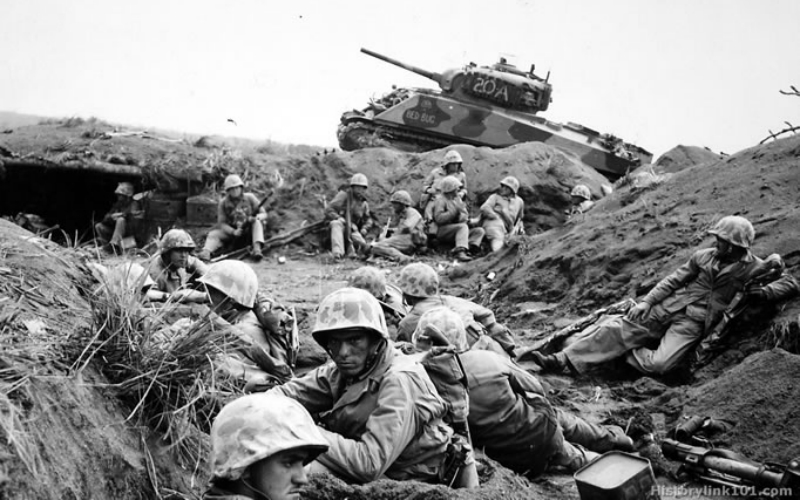
(w)archives: the battle of okinawa and the obscenity of war – war on the rocks
- Select a language for the TTS:
- UK English Female
- UK English Male
- US English Female
- US English Male
- Australian Female
- Australian Male
- Language selected: (auto detect) - EN
Play all audios:
On April 1, 1945 the U.S. Tenth Army, consisting of an Army corps and a corps of Marines, started coming ashore on Okinawa after a lengthy period of naval bombardment of the island and its
130,000 Japanese defenders. Operation ICEBERG was underway. This was the last great island battle of the Pacific War. The Americans wanted air fields on Okinawa from which they could attack
the main islands of Japan. Of course, the defenders fought tenaciously to stop them. Theirs was a losing effort. The Battle of Okinawa lasted 82 brutal days during which 77,000 Japanese
died. They took with them 14,000 Americans. Each of those deaths—American and Japanese alike—was a tragedy. One, however, struck more than the usual number of people in the heart. That was
the April 18 death of Ernie Pyle, killed by a sniper on Ie Shima, a small island just off the coast of Okinawa. Pyle was a famous reporter whose work highlighted the travails and triumphs of
ordinary servicemen. Cynics and sophisticates sometimes criticized his folksy style, but he was widely beloved back home and by service members themselves. After Pyle’s death, Alexander
Roberts, an Army photographer, wrote to a friend “If I had not been there to see it, I would have taken with a grain of salt any report that the GI was taking Ernie Pyle’s death ‘hard,’ but
that is the only word that best describes the universal reaction out here.” The fact that it came only six days after the death of President Franklin Roosevelt probably made it all the more
shocking. Roberts had been nearby when Pyle was killed and low-crawled under fire to the site to photograph Pyle in death. For his action, Roberts got a Bronze Star, but the War Department
withheld his photograph and rumor has it that even ordered the negative destroyed out of concern over the demoralizing effect that it would have. Over the decades after the war, the photo
did surface a few times. It was published in a newspaper article in 1979 and in a book in 1982 and then forgotten. It was rediscovered in 2008. No negatives are known to exist and only a few
original prints survived. Today, however, a digital version of the picture can be seen at the World War II Database website. What the photograph, poignant as it is, cannot show is what was
in Pyle’s pocket when he died: notes for a column he intended to publish when the war in Europe ended. These notes included a passage that is among the most powerful ever written about war
> There are many of the living who have had burned into their brains > forever the unnatural sight of cold dead men scattered over the > hillsides and in the ditches along the high
rows of hedge throughout > the world. > > Dead men by mass production — in one country after another — > month after month and year after year. Dead men in winter and dead >
men in summer. > > Dead men in such familiar promiscuity that they become monotonous. > > Dead men in such monstrous infinity that you come almost to hate > them. > >
These are the things that you at home need not even try to > understand. To you at home they are columns of figures, or he is a > near one who went away and just didn’t come back. You
didn’t see > him lying so grotesque and pasty beside the gravel road in France. > > We saw him, saw him by the multiple thousands. That’s the > difference. Pyle wrote these
words about what he saw in France but they applied equally well to what was happening all around him in the Battle of Okinawa seventy years ago as you read this. _Mark Stout is a Senior
Editor at War on the Rocks. He is the Director of the __MA Program in Global Security Studies__ and the __Graduate Certificate Program in Intelligence __at Johns Hopkins University’s School
of Arts and Sciences in Washington, D.C._